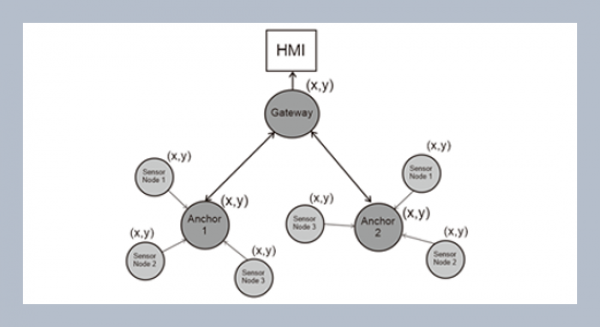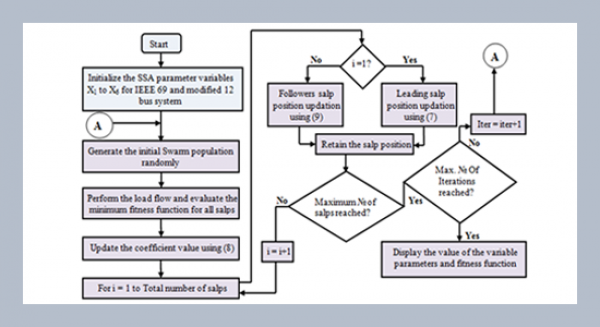REFERENCES
- [1] Harborn, J. B. 1973. “Phytochemical methods”, Chapman and Hall London, 1.
- [2] Farnsworth, N. R. and Soejarto, D. D. 1991. Global importance of medicinal plants. In: Akerele, O., Heywood, V., and Synge, H. (Eds). “The conservation of medicinal plants”. Cambridge university press, Cambridge: 25-51.
- [3] Krishnaraju, A. V., Rao, T. V. N., Sundararaju, D., Vanisree, M., Sheng tsay, H., and Subbaraju, G. V. 2005. Assessment of bioactivity of Indian medicinal plants using Brine shrimp (Artemia Saline) Lethality Assay. International Journal of Applied Science and Engineering, 3: 125-134.
- [4] David S. 2007. “Studies force new view on biology of flavonoids”. EurekAlert. Oregon State University.URL.
- [5] Yamamoto and Gaynor. 2006. Theraputic potential of inhibition of the NF-kB pathway in the treatment of inflammation and cancer. Journal of Clinical Investigation, 107: 135.
- [6] Kirtikar, K. R., and Basu, B. D. 1990. “Indian medicinal plants” (Ed) Bidtter, E. caius.J. F., and Mhaskar K. S. 2019. Periodical Expert’s Book Company.
- [7] Reddy, K. M., Viswanathan, S., Thirugnanasambantham, D., Santa, R., and Lalitha, K. 1986. Effect of Leucas aspera on experimental inflammation and mast cell degranulation. Ancient Science of Life, 5:168-171.
- [8] Reddy, K. M., Viswanathan, S., Thirugnanasambantham, D., Santa, R., and Lalitha, K. 1993. Analgesic activity of Leucas aspera. Fitoterapia, 64:151-154.
- [9] Sadhu, S. K., Okuyama, E., Fujimoto, H., and Ishibashi, M. 2003. Seperation of Leucas aspera, a medicinal plant of Bangaladesh, guided by prostaglandian inhibitory and antioxidant activities. Chemical Pharmaceutical Bulletin, 51: 595-598.
- [10] Chaudhury, N. A., and Ghosh, D. 1969. Studies on insecticidal plants: Chemical examination of Leucas aspera. Journal of Indian Chemical Society, 46: 95.
- [11] Paradhan, B. P., Chakraborty, D. K., and Subba, G. C. 1990. A terpenoid lactone from Leucas aspera. Phytochemistry, 29: 1693-1695.
- [12] Missra, T. N., Singh, R. S., Pandey, H. S., and Singh, S. 1992. Long chain compounds from Leucas aspera. Phytochemistry, 31: 1809-1810.
- [13] Missra, T. N., Singh, R. S., Pandey, H. S., and Singh, S. 1993. Two aliphatic ketols from Leucas aspera. Phytochemistry, 32: 199-201.
- [14] Missra, T. N., Singh, R. S., Pandey, H. S., and Singh, S. 1995. A novel phenolic compound from Leucas aspera. Indian Journal of Chemistry B, 34: 1108-1110.
- [15] Mangathayaru, K., Thirumurugan, D., Patel, P. S., Pratap, D. V. V., David, D. J., and Karthikeyan, J. 2006. Isolation and Identification of Nicotine from Leucas aspera (Willd) Link. Indian Journal of Pharmaceutical Sciences, 88.
- [16] Sessa, G., and Weisman, G. 1968. Effect of components of the polyene antibiotic, Fillipin on phospolipid spherules (liposomes) and erythrocytes. Journal of Biological Chemistry, 243: 4364-4371.
- [17] Litman, G. W., Litman, R. T., and Hennry, C. J. 1976. Analysis of lipophilic carcinogen-membrane interaction using model human erythrocytes membrane system. Cancer Research, 36: 438-444.
- [18] Horie, T., Sugiyama, V., Awazu, S., and Hanano, M. 1979. The correlation between drug binding to the human erythrocyte and its hemolytic activity. Journal of Pharmacology, 4: 116-122.
- [19] Seeman, P. 1972. The membrane actions of anesthetics and tranquilizers. Pharmacological Review, 24: 583-655.
- [20] Nambi, R. A., Sukumar, D., Sethuraman, V., Suluchana, N., and Sadique, J. 1985. “Satellite Symposium on Traditional Medicine as Asian congress of Pharmacology”. Tamil University Thanjavur, 140.
- [21] Kumar Roy, M., Nakahara, K., Nathalang, V., Trakoontivakorn, G., Takenaka, M., Isobe, S., and Tsushidat, T. 2007. Baicalein, a flavonoid extracted from a methanolic extract of Oroxylum indicum inhibits proliferation of a cancer cell line in vitro via induction of apoptosis. Pharmazie, 62: 149-153.
- [22] Shah, R. C., Mehta, C. R., and Wheeler, T. S. 1936. The constitution of Oroxylin-A, a yellow colouring matter from the root-bark of Oroxylum indicum, vent. Journal of chemical Socity, 591-593.















